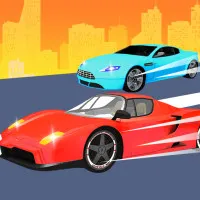Relative Velocity Casual Physics
Advertisement
Relative Velocity: Casual Physics is an innovative physics racing game where players not only control the car but also calculate acceleration, speed and impact forcess in a highly interactive environment. The game is lightly educational, combining entertainment and practical physics knowledge in an intriguing way.
Gameplay and control mechanism Relative Velocity: Casual Physics
- Gameplay: Players drive in physics challenges, overcome obstacles, and calculate interaction force and collision speed to reach the finish line safely or complete the goal.
Control mechanism:
- Use the acceleration, brake and turn buttons.
- Depending on the level, you can adjust the tilt or turn on the physics tools.
Vehicle types and upgrade options Relative Velocity: Casual Physics
- There are many types of vehicles, from trucks and cars to physics toy cars.
- Upgrades can include increasing load capacity, acceleration, impact reduction, or traction.
- Cars are designed with specific physical parameters that directly affect the race results.
Race Tracks and Environments Relative Velocity: Casual Physics
- Race tracks are not on the beaten track, often with unique terrain: slopes, twists, and free-falling objects.
- Some levels also have randomly moving objects, forcing players to calculate collisions relatively accurately.
- The physical environment reacts according to real-world laws: speed + gravity = collision trajectory.
Relative Velocity: Casual Physics game modes
- In Challenge mode, players must overcome physics problems to complete the level.
- Free mode: drive freely in an open map and test collisions and speeds.
- Puzzle mode: combine cars and obstacles to achieve goals using physics knowledge.
How to start playing Relative Velocity: Casual Physics
- Visit the website trafficjam3d.io or the corresponding platform.
- Choose a car type and level.
- Get familiar with the acceleration, braking, and steering controls.
- Observe the physical elements of the screen: height, initial speed, and obstacles.
- Adjust your tactics accordingly to avoid collisions or take advantage of relative force when necessary.
Graphics and sound Relative Velocity: Casual Physics
- Players can easily follow physical movements with the help of simple yet intuitive graphics.
- Objects are simulated according to real models: elasticity, impact force, inertia, etc.
- Sounds simulate movement, collision sounds, and force effects, making the experience more realistic.
Conclusion
RRelative Velocity: Casual Physics is an innovative racing game that demands keen observation and physical reasoning skills. With novel gameplay, diverse modes, and high interactivity, this game is not only entertaining but also trains the brain in an interesting and gentle way.
Category and Tags
Advertisement
Popular games


























Discuss Relative Velocity Casual Physics